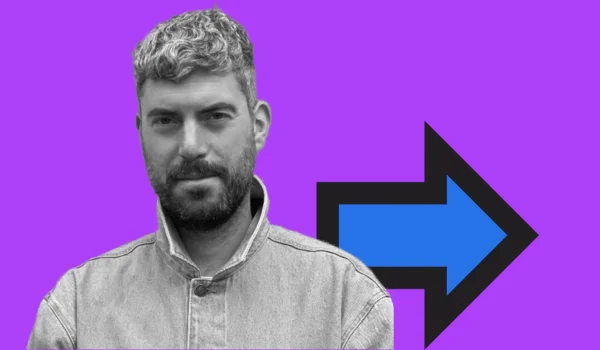Culture campaigns… culture-led brands
“We create culture”. One thing our industry can agree on in 2024 is that we love to talk culture. But sure as culture changes and evolves, so has our use of the term, culture marketing, that has kicked around for well over a decade and has at times become shorthand for every campaign targeting the newest generation in, or simply anything we all universally decided was cool.
“Culture is often used as synonym for ‘Cool Gen Z’ activations, which is why it’s heavily associated with music, fashion and nightlife – but this overlooks other groups that engage with their own cultural worlds,” explains Gabriella Mascia, Insights Planner at PrettyGreen. “It’s about showing up in the moments and topical conversations that resonate with your audience. Everything from raving to running is ’culture’ with the right audience lens. Successful culture marketing is always audience-first – tapping into the insights that excite them, and ensuring your brand becomes a part of those discussions.”
And while culture chatter in the industry has become ubiquitous – the art of creating the connections between brands and their audiences credibly is something that has been pioneered for decades explains Leila Fataar, founder of Platform13 which works with brands and organisations to champion culture-led creativity and storytelling. “Culture is how we communicate, what we wear, eat, see and listen to. It’s how we behave and what and/or who influences us and that includes politics, the media, technology, friends, family etc. It permeates every part of our lives.”
Defining a culturally-relevant brand as ‘one that engages a variety of different audiences consistently and positively, with these audiences in turn advocating for it and helping to attract new audiences’, Fataar explains that “This can only happen because that brand connects meaningfully with people within the context of what is happening in their own, and importantly, the wider world.”
For Diego Pomareda, Marketing Director of Aguila at AB-InBev, it’s about starting with first principles before you start thinking about culture angles: “You need to know your audience, know your challenge, understand your objective and then, only then, bring creativity to the table. Culture marketing nowadays is a way to shape or use culture to engage, impact and most importantly not interrupt our consumers. In a nutshell, how are we aware of context, and how we use that knowledge as marketers… it’s one thing to surf the wave of culture, but quite another to be the one creating that wave.”
Just do it (right)
It’s a view shared by James Kirkham, CEO and founder of ICONIC, “it is about doing things right. It is connected with your audiences by being part of the conversations they’re having, and the communities they might be already building. If you are not part of the fabric of this cultural conversation, audiences and punters will ruthlessly filter you out. Instead of interrupting what your audience is interested in, you need to become what they’re interested in.”
And no interruptions includes no self-serving campaigns – from fear of being cancelled through to ruthless TikTok parodies – brands are well aware of the pitfalls that can follow a perceived misstep. To ensure marketing campaigns are sustainable, brands need to prioritise the work that leaves a lasting change through creating an enduring positive impact.
That comes through connecting and investing with grassroots communities, says Chelsea Mtada, creative strategist at Amplify: “Brands wanting to embark on culture marketing campaigns should deeply connect with grassroots communities, not just as a strategy, but as a genuine investment in their growth and dreams. When brands pour resources and support into these communities, they become integral parts of their journey, fostering loyalty and authenticity.”
This longer-term commitment is essential to avoid being “a cultural plagiarist who thieves.. or a cultural gentrifier who tries to turn an existing community into something it isn’t,” says ICONIC’s Kirkham. Brands need to be in it for the long term, to show that they can add value to the community and the space. Citing Gymshark as a brand that consistently gets it right, due to an unwavering focus on community, he points to the witty ‘Sweat Gala’, which hijacked the Met Gala noise while showcasing workout fashion fit for the red carpet plus the brand’s Regents Park headquarters. “Their living, breathing, fully immersive retail space HQ is built community first, so young athletes who might not be able to afford gym memberships can learn how to lift weights at their ‘bench bar’, or meet their fitness heroes – creators and fitness influencers who regularly frequent the store and mix with the public.”
Celebrate the uncelebrated
Mtada urges brands to find inspiration from uncelebrated talent – therefore making an early commitment to unheard voices. “The true power lies in being early investors in their potential, drawing inspiration from their raw, uncelebrated talent and ambition, rather than waiting for them to gain widespread clout. This approach not only amplifies the brand’s impact but also creates a symbiotic relationship that nurtures and celebrates the culture from the ground up.”
Celebrating the uncelebrated is an approach embraced by Snapchat for its ‘Hidden Black Stories’ campaign in partnership with The Black Cultural Archives. “Driven by the lack of black cultural icons represented in UK statues and landmarks, we worked with Snap to develop an AR lens that revealed the hidden black stories and people behind some of the UK’s biggest landmarks, fronted by Tukwini Mandela,” shares PrettyGreen’s Mascia.
Meanwhile Platform13’s Fataar praises e.l.f Beauty’s ongoing work, from its So Many Dicks campaign to the brand’s Roblox game for entrepreneurs and their partnership of race car driver Katherine Legge “they live their social responsibility values consumer facing: every eye, lip, face, paw or fin.” And she adds, harnessing those values and understanding a brand’s unique culturing positioning in order to then unlock the role it can play for audiences – both within the business and to external communities, fans and consumers will always be core in developing the most relevant work.
Add to this a singular focus and you’ve got enduring work that will keep resonating, says
Maria McDowell, founder of Lollipop Mentoring. “Dove’s Crown Act and the “My Hair, My Crown” work was unapologetically direct. The brand didn’t try to pander to everyone – it was so specific and centred on black women and girls, and their hair. It’s complex and not everyone understands – I just loved the bravery of it all. People can get so afraid of being cancelled that they shy away from these choices, but I want to see more bravery – don’t try to placate everyone.”
You can hear more from Leila in person at Brands & Culture in November and from Diego at The Brands&Culture Villa in Cannes.
📬 Want to write a guest column? Send us a pitch!



